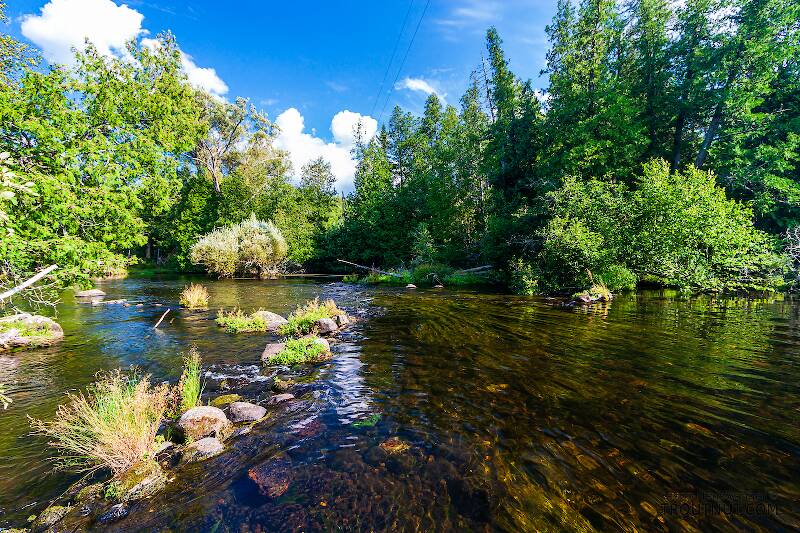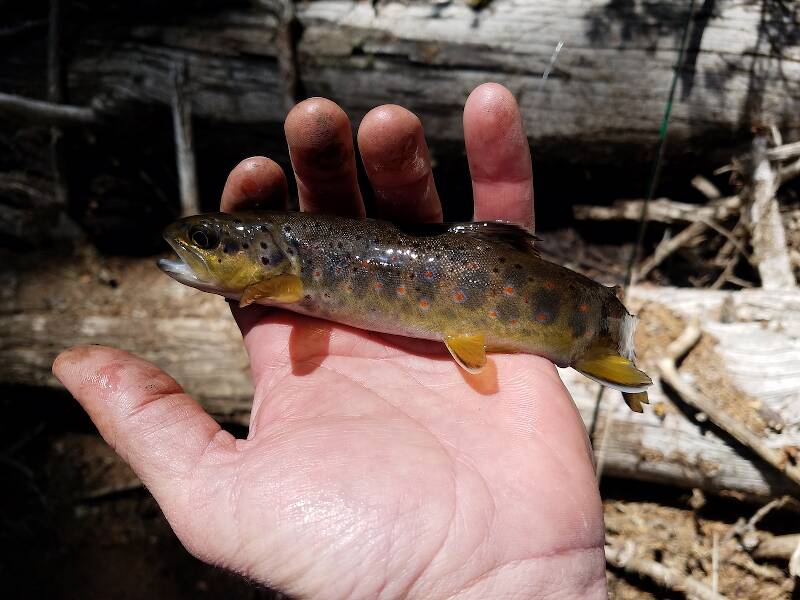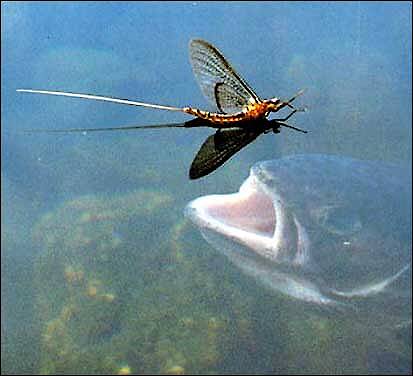
Salmonflies
Pteronarcys californica
The giant Salmonflies of the Western mountains are legendary for their proclivity to elicit consistent dry-fly action and ferocious strikes.
Featured on the forum

Troutnut is a project started in 2003 by salmonid ecologist Jason "Troutnut" Neuswanger to help anglers and
fly tyers unabashedly embrace the entomological side of the sport. Learn more about Troutnut or
support the project for an enhanced experience here.
Red_green_h on Jan 6, 2021January 6th, 2021, 9:48 am EST
Tried tying my first fly and it was a disaster. My 1st effort was going well until I accidentally clipped the thread in the middle of the fly. So I had to start over. 2nd try was not much better. My 3rd try was going pretty good but the body of the fly kept spinning around the hook. How do I prevent this from happening? Did I not start my tie off right?
Partsman on Jan 6, 2021January 6th, 2021, 10:46 am EST
Red, welcome to the world of fly tying! Not knowing what pattern you are starting out with, I would say get on the internet and find a good video on tying that fly. Probably one of the most popular and easier patterns would be a elk hair caddis. There are a few different techniques envoled with it so maybe starting with something like that maybe helpful. Other than that lay down a thread body for your materials to grab hold of, and learn how to do the pinch wrap to hold materials on top of the hook shank. There are so many good videos and books now a days it just depends on how much time you have and are willing to put into it. The best way to start your thread is at a point where you want your body our dubbing to end, this would also be a point for wings, then wind a single thread body back to were your thread is hanging close to or at the barb. Then tie in tail material and start body material. The important thing for me is always proper proportions and getting wings set in the right spot for dries. I hope some of the better tiers can chime in, but I would still say look up some videos by Jim Misura, he's pretty good at explaining what he is doing and why. Also go to the www.flytyingforums lot of info there. You just gotta put in the time, it will happen.
Mike.
Mike.
Red_green_h on Jan 6, 2021January 6th, 2021, 12:38 pm EST
I'm starting with a royal wulff, the first fly I caught a trout on fly fishing. I've watched this particular video over and over again. Practice, not as easy as the video makes it look.
Wbranch on Jan 7, 2021January 7th, 2021, 8:04 am EST
Hello Red_green,
The Royal Wulff is by no means an easy fly to tie even for skilled tiers. It is difficult to apply divided white calf tail wings and the body is a nuisance with the first section of peacock heerl and then the red floss and then another section of herl, then tying in the wings and palmering the hackle. Why don't you select an easier dry fly?
Try a brown bi-visible or a Adams which is a fantastic fish catcher. You don't have to tie in Grizzly hackle tips for the wings either. Just tie in a clump of gray Z-lon or Antron and make a few turns of the grizzly and brown hackle behind, and in front, of the wing.
I'm starting with a royal wulff
The Royal Wulff is by no means an easy fly to tie even for skilled tiers. It is difficult to apply divided white calf tail wings and the body is a nuisance with the first section of peacock heerl and then the red floss and then another section of herl, then tying in the wings and palmering the hackle. Why don't you select an easier dry fly?
Try a brown bi-visible or a Adams which is a fantastic fish catcher. You don't have to tie in Grizzly hackle tips for the wings either. Just tie in a clump of gray Z-lon or Antron and make a few turns of the grizzly and brown hackle behind, and in front, of the wing.
Catskill fly fisher for fifty-five years.
Martinlf on Jan 9, 2021January 9th, 2021, 4:32 am EST
I'll second the advice on looking at videos, and on starting with easier flies. For the adams you can even omit the wing. It will catch fish just fine without any wing, but the clump antron or zelon Matt recommended will work too, if you figure out how to do that. Specifically the problem with the body spinning means you did not seat your thread well when you started. As Partsman suggests start your thread where you want the body to end. This will show you how to avoid spinning bodies: https://www.youtube.com/watch?v=bdrmzVEzRMM
Find videos that focus on any steps you are having trouble with, then, as you said, practice. In time it starts to be automatic, just like riding a bicycle.
Find videos that focus on any steps you are having trouble with, then, as you said, practice. In time it starts to be automatic, just like riding a bicycle.
"He spread them a yard and a half. 'And every one that got away is this big.'"
--Fred Chappell
--Fred Chappell
Wbranch on Jan 10, 2021January 10th, 2021, 10:57 am EST
It will catch fish just fine without any wing
This is a good point. I'm not all that sure that a trout can clearly see the wing on a dry fly. I know the tails and body are important. But once you add the hackle (to imitate the insect legs and to help the fly float) it is quite hard to see the wing when you look up from underneath the fly.
The Adams has two different color hackle. One is a Coachmen Brown (any stiff brown hackle will do just fine) and a Grizzly hackle. That comes from a Plymouth Rock rooster.
I like to strip the fuzz from the bottom of the hackles so there is just a bare stem. Then tie in the bare stem with 3 or 4 tight wraps of hackle. Then tie in the grizzly hackle. If the feathers are long enough you can wrap them, one at a time, around the thread base on the hook to about 1/8" from the eye. Then wrap the grizzly feather right through the brown so the two colors mix. Then build up a nice thread head, tie a few half hitches to secure the thread and add some cleat nail polish to the head to cement it in place.
Catskill fly fisher for fifty-five years.
Coha on Jan 14, 2021January 14th, 2021, 8:16 am EST
Here are some great videos that you have to watch carefully.
Attaching fly tying thread & Thread control
Setting bobbin tension
Dubbing techniques
Dry Fly hackle tying technique
Maybe your tools aren't good. Read this article
Fly tying kit
One of the best dry fly and easiest to tie
F-fly
Attaching fly tying thread & Thread control
Setting bobbin tension
Dubbing techniques
Dry Fly hackle tying technique
Maybe your tools aren't good. Read this article
Fly tying kit
One of the best dry fly and easiest to tie
F-fly
Quick Reply
Related Discussions
Topic
Replies
Last Reply
7
May 29, 2012
by Possumpoint
by Possumpoint
6
May 12, 2013
by Tigermidge
by Tigermidge







